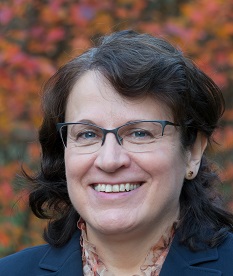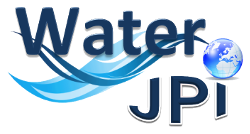AgriAs
|
AgriAs: Evaluation and management of arsenic contamination in agricultural soil and water |
|||||||||
 |
Coordinator: Kirsti Loukola-Ruskeeniemi |
||||||||
|
Projects Partner and Institution: |
|||||||||
|
Key words: WWTP, arsenic, agricultural soil, surface water, risk management, bioavailability, adsorption materials, membrane technologies, photocatalytic technologies. |
|||||||||
|
Abstract: AgriAs project summarized national and European databases and developed recommendations and guidelines for the sustainable management of arsenic (As) risks in agricultural areas. The AgriAs consortium is coordinated by the Geological Survey of Finland (GTK) and consists of six partners from research organisations, universities and companies from Finland, France, Germany and Sweden. In Europe, some As anomalies can be linked to the natural geochemical background, but most of them have an anthropogenic origin, from past or present mining and processing of sulphide ores or in some cases ammunition used during war. In addition, anthropogenic releases from wood preservatives, insecticides and herbicides have increased As concentrations in the European environment. The average As concentrations in topsoil are higher in central and southern Europe compared with those in Northern Europe due to both geological reasons and anthropogenic contamination. AgriAs project carried out studies in two sites:
Within the framework of the AgriAs project, soil from Freiberg was used for laboratory studies in addition to Germany, also in France and in Finland. The results from the study sites were compared with the results of previous EU projects carried out in a natural bedrock-related As area south of the Tampere city in Finland. Risk assessment tools were developed to assess risks to health and the environment. An exposure model for arsenic in agricultural soils was developed. The tools take into account site-specific data on arsenic speciation, transport, bioavailability and toxicity. The tools were used to assess the present-day situation at the sites and the effect of the methods of amelioration, remediation and treatment. The AgriAs risk assessment model was developed with the data from the two study sites. A set of recommendations for the sustainable management of the risks from As in soils and recipient waters was developed on the basis of the regulations and procedures in Saxony. In addition, arsenic removal technologies for water and soil were developed. The most commonly used technologies for the water treatment are precipitation, sorption and membrane processes. The most suitable removal technology depends on design requirements and the characteristics of water. Treatment processes for soil can be divided into 1) methods for the removal of pollutants and 2) methods for the immobilization of pollutants. The most common treatment technologies for soils are immobilization of As by soil amendments. The results of the questionnaire we sent to all European countries revealed that large scale regional data on As concentrations in soil, surface water and groundwater are available from most countries, but only seldom the regional data represent agricultural soil and adjacent water bodies. European-wide data as well as nationwide data in map format on As concentrations in crops are lacking. Development of risk assessment models is recommended so that the physical and chemical form of As in the releasing and receiving environments can be taken into account. This way the effect of important environmental factors, such as redox conditions, can be taken into consideration. We recommend that the future research should pay more attention to the interrelation of different contaminants in soil and water systems. In our test sites, and in many other As-contaminated areas also, other metals and organic contaminants are present in concentrations that imply risks to health and the environment. The effects of emerging contaminants like medical residues, hormones, pesticides, herbicides and microorganisms on the behaviour and effects of As are not fully understood yet. Other contaminants are also important with regard to amelioration techniques for soil, as the immobilization of As can cause other contaminants to become more mobile. Healthy soils are the basis for healthy food. Even though the European Commission withdrew the drafts of the European Soil Protection Directive in 2016, the results from our project show that the need for coordinated management of the problems of As-contaminated soils remains. This could be achieved with guidelines and regulations developed in close cooperation with the stakeholders both in the national and at the EU level. Soil contamination by As can be caused by various sources: e.g., residues of ammunition, mineral occurrences, dust from smelters, and pesticides. Soil contamination has consequences not only for agricultural products but also for the contamination of groundwater and air. Within the AgriAs project, solutions based on the German law are presented as examples since As regulation is most advanced in Saxony. Dissemination and interaction with stakeholders had a key role in the project. At the stakeholder workshops organized in Germany, France and Finland, discussions between farmers, authorities and researchers were active. AgriAs organized a specific Arsenic Workshop in association with the large international SETAC conference in May 2019 (SETAC ‘Society of Environmental Toxicology and Chemistry’). Participation of the AgriAs Scientific Coordinator professor Kirsti Loukola-Ruskeeniemi in the Water JPI Knowledge Hub ‘Emerging contaminants’ and the activities of the Water JPI stakeholder team of Finland provided a new channel to discuss results with the scientific community. Dissemination has been active. In addition to numerous other papers and presentations, scientific manuscripts are submitted to high-level international referee journals. |
|||||||||
|
Project structure:
|
|||||||||
|
Implementation: |
|||||||||
|
Outcome/deliverables: |
|||||||||
|
Main outputs:
More results on the project: Data and resources |
|||||||||
| Contact Point for Communication/Dissemination activities: Kirsti Loukola-Ruskeeniemi, GTK | |||||||||
|
Contact Point for Open Data/Open Access activities: Kirsti Loukola-Ruskeeniemi, GTK, Finland |
|||||||||
